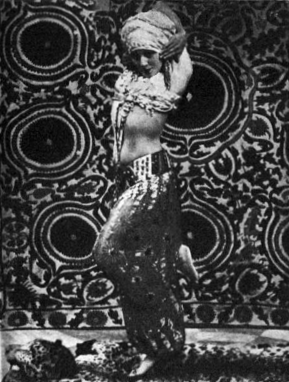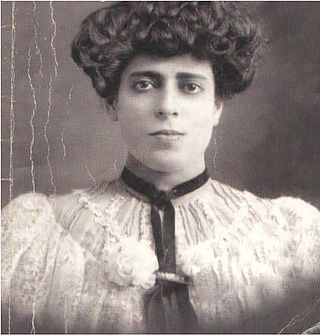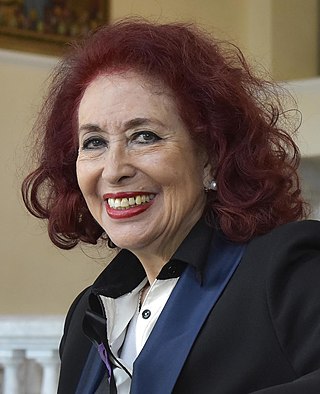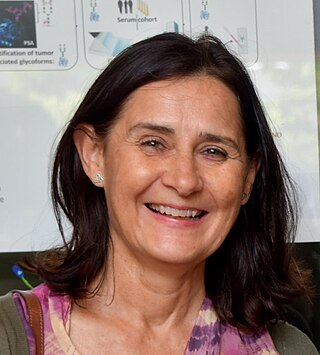Enriqueta Vila Vilar | |
|---|---|
 | |
| Born | 14 May 1935 Seville |
| Awards | |
Enriqueta Vila Vilar (born 1935) is a Spanish historian and researcher specialised on the History of the Americas.
Enriqueta Vila Vilar | |
|---|---|
 | |
| Born | 14 May 1935 Seville |
| Awards | |
Enriqueta Vila Vilar (born 1935) is a Spanish historian and researcher specialised on the History of the Americas.
Born in 1935 in Seville, she earned a PhD in History of the Americas from the University of Seville in 1972. [1] She worked as research lecturer at the Consejo Superior de Investigaciones Científicas (CSIC). [2] She served as Seville municipal councillor in representation of the Andalucist Party (PA) and was charged with the municipal government area of Culture from 1991 to 1995. [2] In 1995, she became the first female numerary member of the Real Academia Sevillana de Buenas Letras, serving as director of the learned society from 2011 to 2014. [3] [2]
In January 2012, she was elected to cover the vacant seat as numerary member of Royal Academy of History left by the decease of Juan Vernet; she assumed on 16 December 2012, reading a speech titled Hispanismo e hispanización: el Atlántico como nuevo Mare Nostrum. [1]

Seville is the capital and largest city of the Spanish autonomous community of Andalusia and the province of Seville. It is situated on the lower reaches of the River Guadalquivir, in the southwest of the Iberian Peninsula.

The Royal Spanish Academy is Spain's official royal institution with a mission to ensure the stability of the Spanish language. It is based in Madrid, Spain, and is affiliated with national language academies in 22 other Hispanophone nations through the Association of Academies of the Spanish Language. The RAE's emblem is a fiery crucible, and its motto is Limpia, fija y da esplendor.

Écija is a city and municipality of Spain belonging to the province of Seville, in the autonomous community of Andalusia. It is in the countryside, 85 km east of the city of Seville. According to the 2008 census, Écija had a total population of 40,100 inhabitants, ranking as the fifth most populous municipality in the province. The river Genil, the main tributary of the river Guadalquivir, runs through the city.

The Regio Academia de la Historia is a Spanish institution in Madrid that studies history "ancient and modern, political, civil, ecclesiastical, military, scientific, of letters and arts, that is to say, the different branches of life, of civilisation, and of the culture of the Spanish people". Spanish people in this regard are understood to be citizens of the Kingdom of Spain or the indigenous people of its predecessors, or their descendants. The academy was established by royal decree of Philip V of Spain on 18 April 1738.
DonCarlo Emanuele Maria Ruspoli, Duke of Morignano is a nobleman and architect. Firstborn son of Galeazzo Maria Alvise Emanuele Ruspoli, 2nd Duke of Morignano and first wife Doña María Elisa Soler y Borghi, of the Marquises of Rabell. He is Doctor of Architecture of the University of Rome, writer, anthropologist and researcher.
José Luis Martínez Rodríguez was a Mexican academic, diplomat, essayist, historian, bibliographer and editor. He was the director of the Fondo de Cultura Económica from 1977 to 1982 and professor of literature with the Faculty of Philosophy and Letters at the National Autonomous University of Mexico.

Carmen Tórtola Valencia was a Spanish early modern dancer, choreographer, costume designer, and painter, who generally performed barefoot. Tórtola Valencia is said to have been the inspiration for Rubén Darío's poem, La bailarina de los pies desnudos.

María Enriqueta Camarillo (1872–1968) was a Mexican poet-novelist, short story writer and translator. She was widely recognized for her works, with schools and libraries named after her, as well as a bust by Spanish sculptor Mariano Benlliure erected in Hidalgo Park in Mexico City in her honor. She received the 1923 literary prize from the Académie française for her novel El Secreto. She was awarded a collaborative partnership in 1927 with the Real Academia Hispano-Americana de Ciencias y Artes of Cádiz for her textbook Rosas de la Infancia. For the same work, she also received the prize for best children's literature from the Literary Salon of the Universal Exposition in Seville, Spain. Camarillo was granted the Order of Isabella the Catholic in 1947 and in 1948 received the Civil Order of Alfonso X, the Wise.

Francisco de Borbón y de la Torre was a Spanish aristocrat, military officer and member of parliament in Spain. He was a cousin of King Alfonso XIII of Spain and was styled as Duke of Seville by virtue of his marriage in 1907 to the 4th Duchess of Seville. In 1935, he was authorised by King Alfonso XIII to accept the appointment as Grand Master of the Order of Saint Lazarus.
Francisco de Paula Enrique María Luis de Borbón y Borbón was a Spanish aristocrat and a distant relative of the Spanish royal family. He had a brilliant and outstanding military career as a Lieutenant General and commander of the cavalry in the Spanish Army.
María del Pilar León-Castro Alonso is a Spanish archaeologist and historian, as well as an academician of the Real Academia de la Historia.
Myriam Seco Álvarez is a Spanish archaeologist and Egyptologist. A distinguished authority in those fields, the author of several reference books, and responsible for excavations in the Middle East and Egypt, she has launched and directed important archaeological projects, including the excavation and restoration of the mortuary temple of Pharaoh Thutmose III. The so-called "Spanish Indiana Jones", she has had a prolific professional career and a broad international presence.

Carmen Jiménez Serrano was a Spanish painter, sculptor, and professor.

Lidia Falcón O'Neill is a Spanish politician and writer. With a degree in law, dramatic art, and journalism, and a PhD in philosophy, she has stood out for her defense of feminism in Spain, especially during the Transition.
Pilar Montoya Manzano, known as La Faraona, was a Spanish Romani flamenco dancer. A member of the Farrucos family, she was the eldest daughter of dancer Antonio "Farruco" Montoya Flores and singer Enriqueta Reyes, as well as the sister of Rosario "La Farruca" Montoya and the aunt of Juan Manuel "Farruquito" Fernández Montoya, Antonio El Farru, and El Carpeta.

Carlos Martínez Shaw is a Spanish historian, professor emeritus of Early Modern History at the National University of Distance Education (UNED). He is a member of the Royal Academy of History.
Fernando Jiménez de Gregorio was a Spanish historian. He served as official cronista of the Province of Toledo.
Josefina Muriel de la Torre was a Mexican writer, historian, researcher, bibliophile, and academic. She specialized in the history of the feminine and religious world of the time of New Spain. She was awarded the Order of Isabella the Catholic by the government of Spain in 1966.

Ignacio Romero Osborne, 5th Marquess of Marchelina (1903-1985) was a Spanish aristocrat, landowner, officer and Carlist politician. In the 1930s he conspired against the Republic and co-engineered the 1936 coup in Seville; during the Civil War he commanded company-type units in Nationalist ranks. He is best known as leader of the Requeté ex-combatant organisation, active in particular in the late 1960s. During internal struggle within Carlism he sided with the progressist faction against the traditionalist one and helped to tip the balance in favor of Prince Carlos Hugo. In 1968-1971 he was member of the Carlist executive, Junta Suprema; afterwards he presided over the provincial Seville branch of Partido Carlista. In the 1970s he conspired against the Franco regime and supported the radical left-wing socialist line of PC.

Montserrat Vilà i Planella is a Spanish ecologist who primarily studies the biological and environmental factors that determine the presence and success of invasive plants, as well as their ecological and economic impacts.